Classic British Scones (Eggless Recipe)
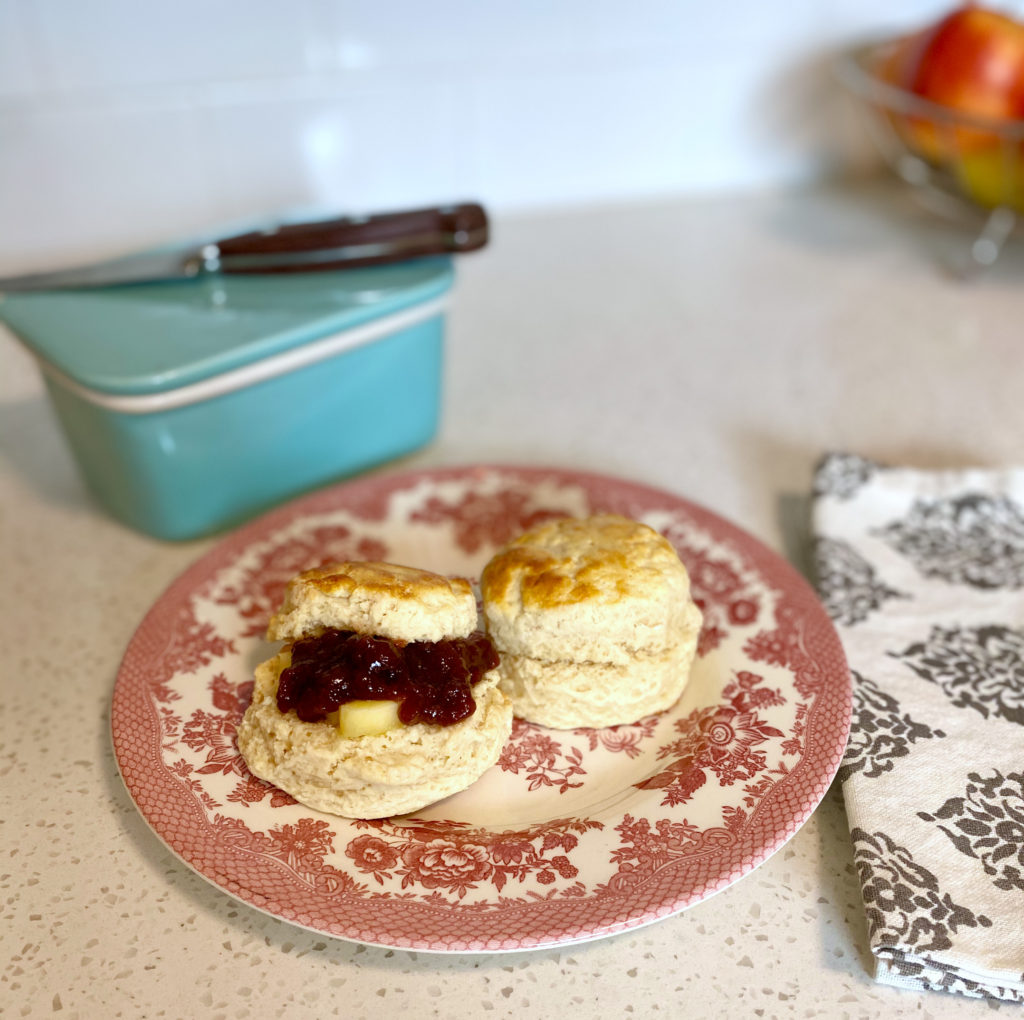
This a a classic base recipe for perfect classic British scones every time. These scones are tender and fluffy inside with crisp, crumbly edges. These slightly sweet scones are the perfect carrier for jam, lemon curd, and/or clotted cream.
This post may include affiliate sales links. Please see Affiliate Disclaimer in my Privacy Policy.
This scone recipe is based on all the classic British scones recipes I’ve tried over the years, with the exception of Mary Berry’s recipe which includes eggs. Although Mary Berry’s recipe is delicious as well, I like the idea of fewer ingredients needed. This recipe calls for lemon juice added to milk, as a substitute for buttermilk. The acid in the lemon juice helps increase the rise. However, feel free to use buttermilk if you have it.
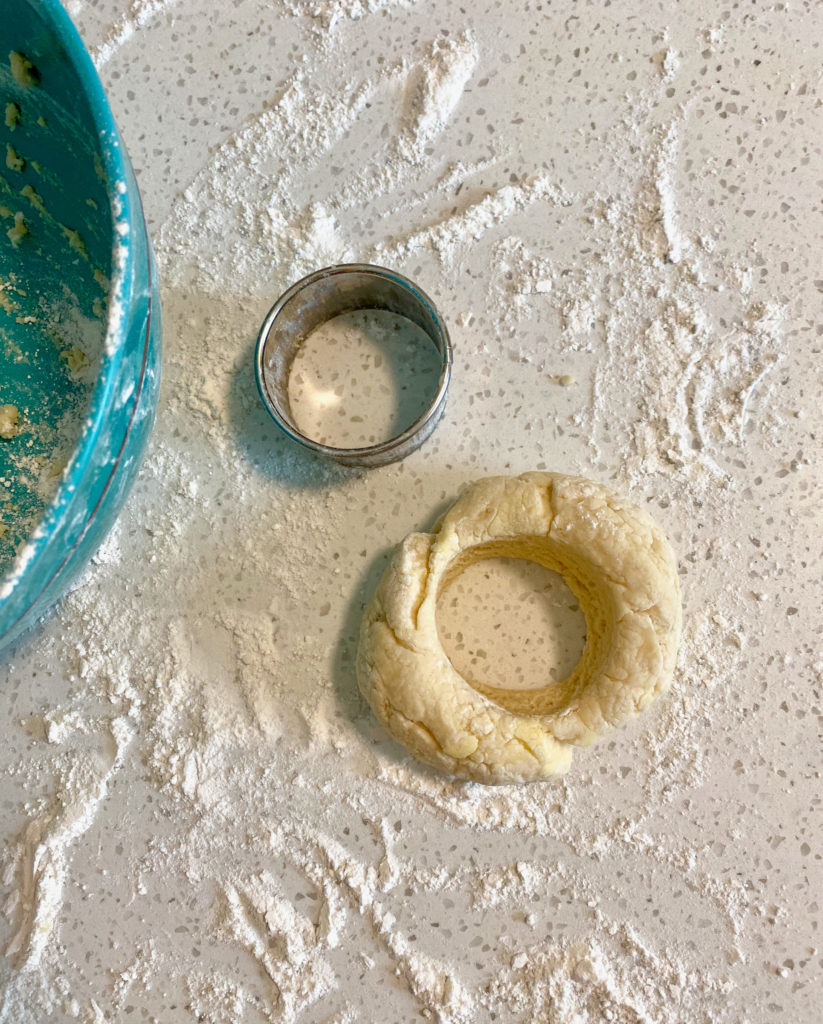
This recipe makes 8-10 scones when made with a 2-inch cutter. It’s important not to over work or knead the dough which could make them tough. I find that gently forming the dough back together after cutting helps prevent over working. However, I’d recommend only doing this a maximum of 3 times.
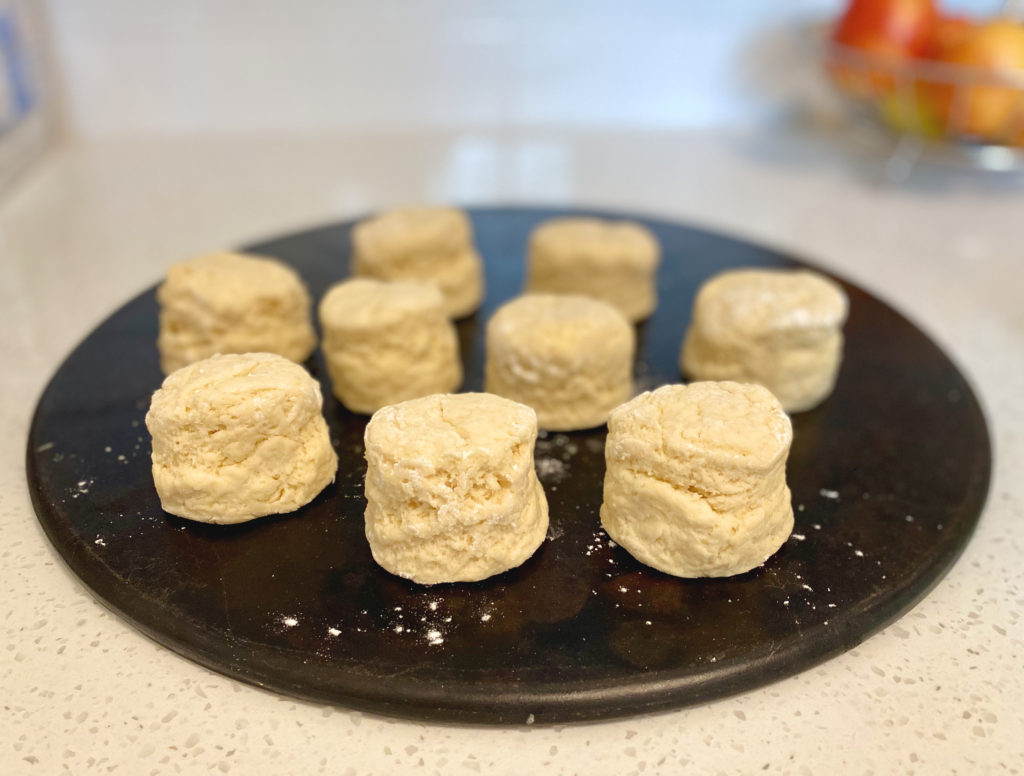
Many scone recipes call for an egg wash on top. However, since this is an eggless recipe, I chose to use milk. This works out well for those who avoid eggs, as well as those who don’t have any on hand. The milk, or egg, helps the tops turn that beautiful golden color that scones are known for.
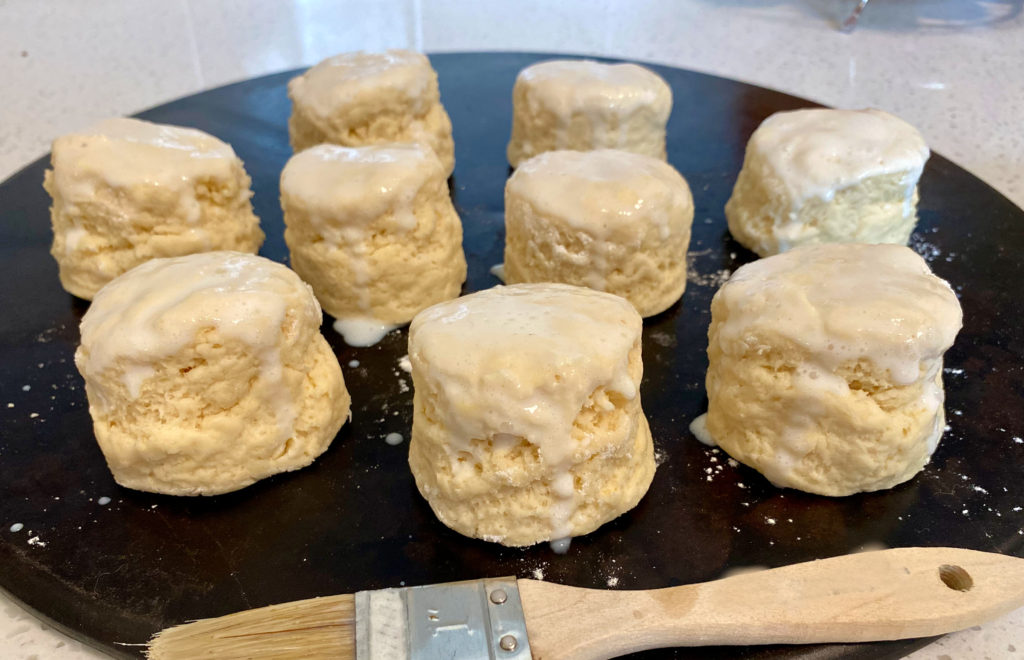
It’s best to bake the scones at a high temperature, just like biscuits. Anywhere from 425F to 475F should do the trick. However, you should experiment with your oven to find out what works best for you. Although I baked these at 425F initially, they were taking longer than I’d like. So I bumped up the temp to 450F near the end. Knowing my oven, I should have started out at 450F-475F. I bake my Buttermilk Biscuits at 475F, and that temperature is perfect every time. I like to bake scones and biscuits on my well-seasoned baking stone, but you could use a regular cookie sheet as well.
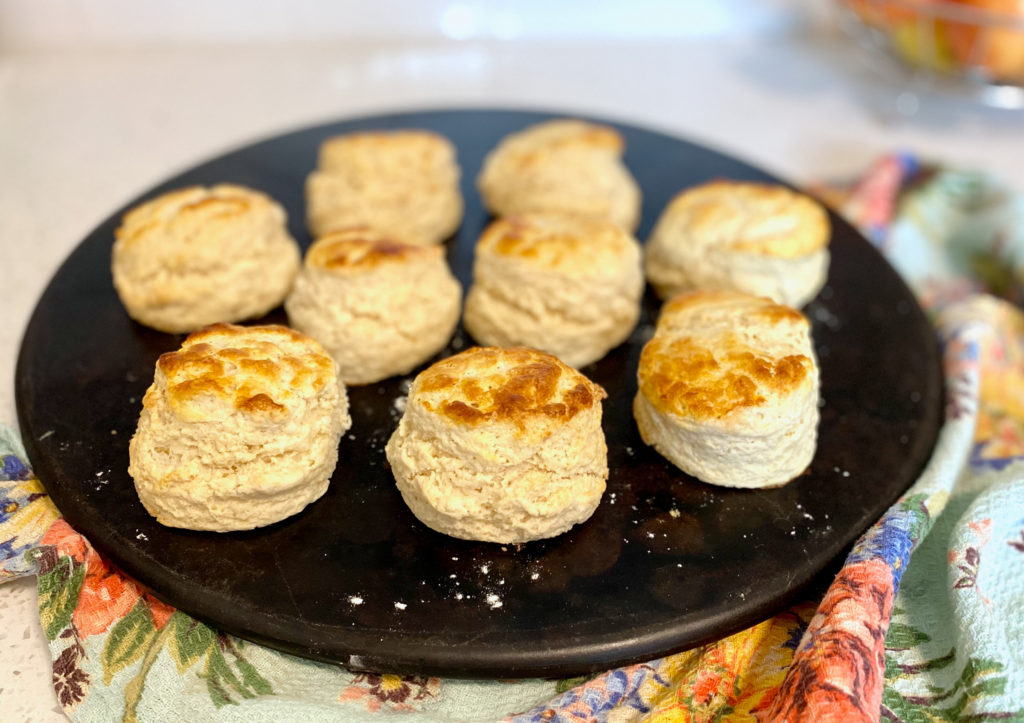
Scones, like biscuits, are best eaten warm from the oven with good things like butter, jam, lemon curd, or cream melting into them. This is a base recipe, which means they can easily be customized to your liking. For example, try adding fruit like blueberries, raisins or currants, or any dried fruit, after rubbing the butter into the flour. You can also experiment with other extracts besides vanilla, such as lemon or orange. I’ve written about Fiori di Sicilia extract before, and I think it would be a perfect flavoring to use, with the addition of fruit or a glaze.
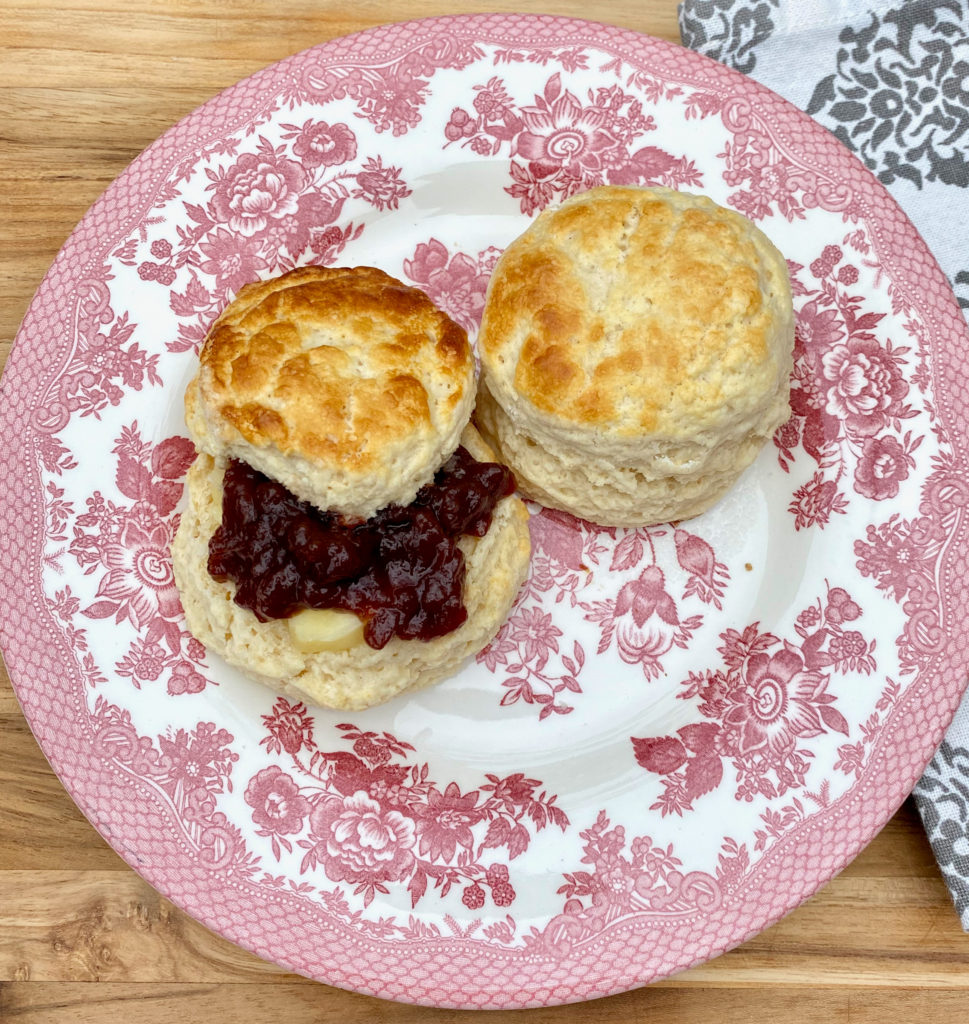
Recommended Items:
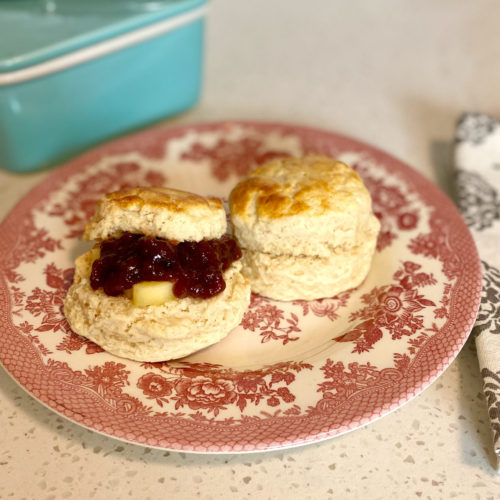
Classic British Scones (Eggless Recipe)
Ingredients
- 350 g self-rising flour
- 1 tsp baking powder
- 1/2 tsp salt
- 85 g butter cut into cubes
- 3 tbsp sugar
- 175 ml milk plus extra for glazing
- 1 tsp lemon juice
- 1 tsp vanilla
Instructions
- Preheat oven to 450F. Warm milk gently in the microwave for about 30 seconds. Add the lemon juice and vanilla and set aside.
- In a medium bowl, stir together flour, baking soda, salt, and sugar. Add the butter and with your fingertips, rub the butter into the flour. The mixture should look like sand when you're finished.
- Pour the milk mixture into the flour mixture and quickly stir together. The dough will be fairly slack but slightly cohesive. Tip the dough onto a flour-covered counter. Cover your hands with flour and gently fold the dough over onto itself 3-4 times. Gently pat the dough into a disk that about 1 1/2 to 2 inches thick.
- Dip a 2-inch round cutter into flour. Cut as many rounds as you can, dipping the cutter into flour each time. Place the rounds onto a baking sheet or baking stone. Gently reform the dough into a round and cut more rounds. Don't do this more than three times or the dough will get too tough.
- Bake the scones for 10-15 minutes, checking after 10. The scones should be slightly golden on top when finished baking. Remove from the oven and let cool 5-10 minutes before serving. Serve with butter, jam, lemon curd, or clotted cream.

